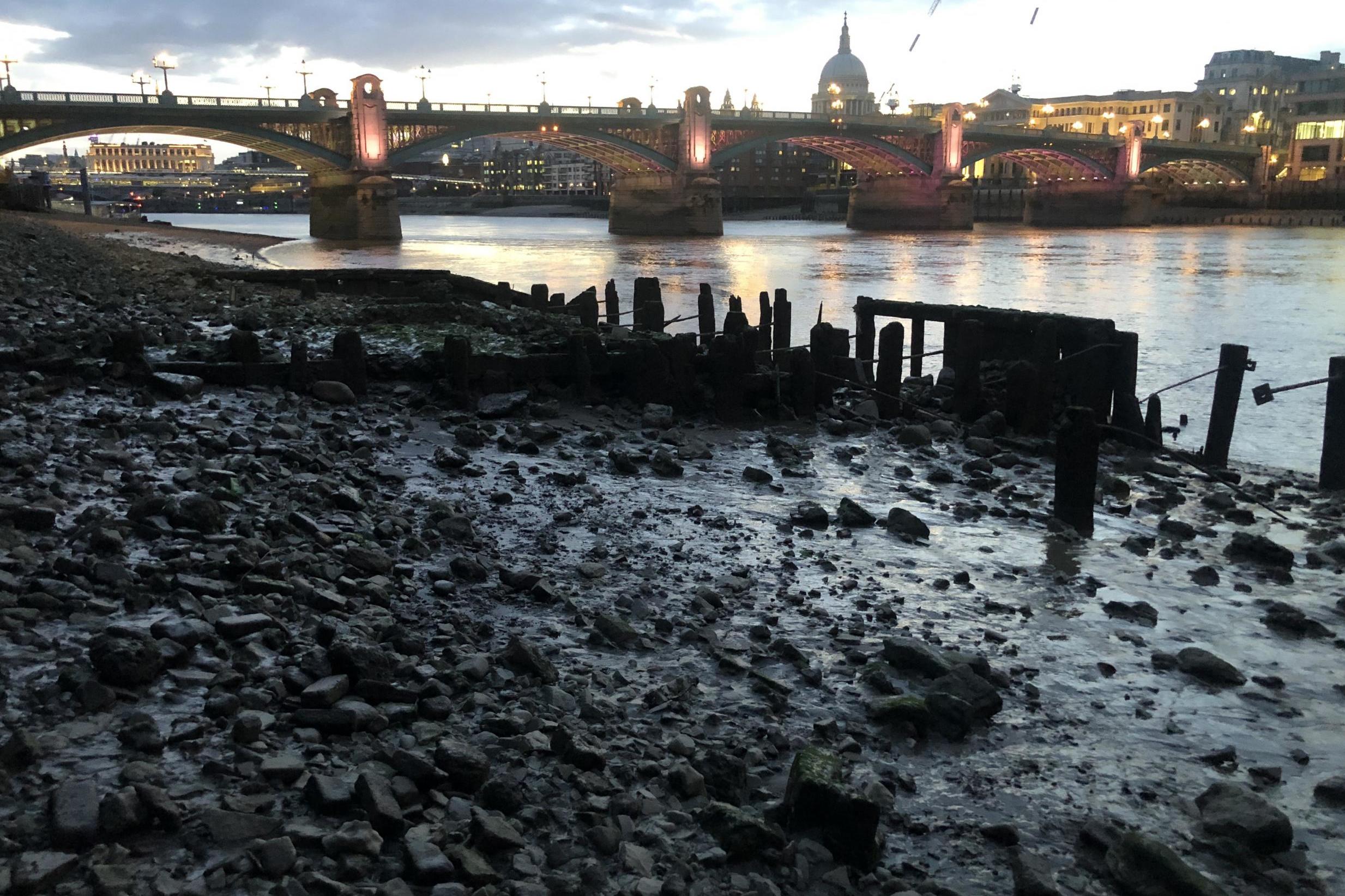Tales of the river bed: A strange Saturday night on the banks of the Thames
The Man Who Pays His Way: The British travel and tourism industry is ebbing away

You, I imagine, have had some weird Saturday nights recently. But last weekend was off the surreality scale for me.
Over these 10 strange weeks, as our horizons have reduced, we have taken to looking at the world in close-up. For decades I have been a stranger to the side streets of SE1. Yet after the past couple of months of daily exercise, I reckon I could plausibly handle a short-notice paper round or Deliveroo shift in the immediate vicinity of my corner of south London.
Last Saturday evening, I walked past the sprawling emptiness of Waterloo station, previously the busiest transport terminal in Europe, to the banks of the Thames, devoid of visitors.
At sunset, Ray Davies’s “Dirty old river” was almost devoid of water. It was as if someone downriver in Sheppey or Southend had mischievously pulled out the plug, and most of the contents of the Thames had disappeared down the drain.
I decided to take a stroll on the river: not quite walking on water, but the next best thing, and crept down some steps to what remained of the Thames. The recently revealed river bed was mostly hard sand, now and again yielding to black, sticky mud.
The city above the river banks was a silent silhouette, with St Paul’s Cathedral the dominant presence. As I followed a broad meander downstream, the empty bridges calibrated my journey. Every now and again, a glow of lights and a distant rumble announced a bus or train trundling vacantly across the half-full river.
Can art really be said to exist, I mused while passing the ghostly bulk of Tate Modern, when no tourist can actually get in to see it?
Beyond Southwark Bridge, the tale of the riverbed took a twist. Poking up from the murk, an array of timbers had been left behind by the Victorians.
Yet my mind was unable to take a Dickensian diversion to a time when the Thames was a thoroughfare for commerce rather than sightseeing. Because all this time I had been talking on the phone to a succession of courteous, well-intended press officers serving various government departments.
The previous evening, the home secretary had announced that the UK would introduce quarantine on 8 June. Priti Patel’s plan for 14 days of self-isolation for all arrivals to Britain manages simultaneously to be deeply damaging to the travel industry while ridiculously easy to avoid. Taking the Foreign Office and Home Office advice together, it was clear the briefest of visits to an Irish airport would deliver exemption from quarantine.
Saturday evening’s Downing Street press conference was hosted by the transport secretary, Grant Shapps – soon to be Sir Grant, after volunteering to being pushed under the No 10 bus. He was on duty on the very evening Dominic Cummings’ lockdown adventure to County Durham was the only talking point.
Or was it? Gordon from Gosport wanted to know: “How is the government going to prevent travellers staying in the Irish republic after their holidays to bypass the UK’s 14-day quarantine?”
Mr Shapps, delighted to take a non-Dom question, replied: “Whether somebody travels to Dublin or somebody travels to London, the same essential quarantine system would apply.”
But the Foreign Office travel advice on Ireland taken together with the Home Office briefing on quarantine indicated the opposite: that the “Dublin dodge”, while irresponsible and potentially harmful, was a loophole even wider than the Thames Estuary where it oozes into the North Sea.
While I asked once again which of the government’s conflicting versions of the truth was correct, I picked a path back to Southwark Bridge and found, by the upstream pier, an implausible stairway back to street level. At the top was a huge gate that looked forbiddingly locked. Yet I climbed the steps, hauled on the bars and it opened.
I only hope the government can find a similar exit strategy from its hopelessly misguided quarantine policy before the British travel and tourism industry ebbs away.
Join our commenting forum
Join thought-provoking conversations, follow other Independent readers and see their replies
Comments